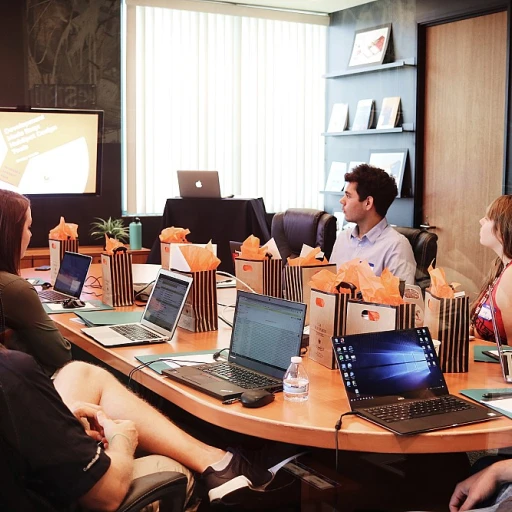Understanding Employee Assessment Tools
Decoding the Functionality of Employee Assessment Tools
Employee assessment tools stand at the core of modern talent management practices. They have become essential in the pre-employment stage for identifying the right candidates, determining the best fit for job roles, and making informed hiring decisions. These tools encompass a variety of formats, including skills assessments, personality tests, and emotional intelligence evaluations, each tailored for specific insights into potential employees' capabilities and suitability for the role.
The advent of technology has brought about a proliferation of assessment tools that are reshaping the hiring landscape. These tools streamline the selection process, offering a more efficient and objective view of candidates' abilities. In fact, these assessments form an integral part of the hiring process, ensuring that only the candidates meeting the required standards proceed to the next stages. Ultimately, this not only aids in improving the immediate recruitment outcomes but also plays a crucial role in succession planning and employee development.
As companies continue to strive for robust employee engagement and performance, these assessments serve as a valuable resource in mapping out training and development pathways. They offer a degree feedback mechanism to manage employee performance effectively, which is imperative in aligning talent with business needs. Moreover, they are instrumental in identifying gaps in skills among existing employees, guiding management teams in crafting targeted training interventions.
It's important to note that while the advantages of employing assessment tools are numerous, they must be implemented thoughtfully to avoid any negative impacts on candidate experience. As we explore the implications of these tools further, we'll uncover the delicate balance needed between automation and human touch, along with strategies to overcome potential challenges, enhancing the candidate journey with digital solutions.
The Impact of Assessment Tools on Candidate Experience
The Role of Assessments in Shaping Candidate Interactions
Employee assessment tools are not merely mechanisms for evaluating potential hires; they play a pivotal role in shaping the candidate experience throughout the hiring process. When utilized effectively, these tools can transform what is often a high-pressure environment into a more engaging and informative experience for candidates. Leveraging Assessments for Skill and Trait Identification Incorporating skills assessments and personality tests allows candidates to showcase their capabilities in a controlled environment. These evaluation methods give candidates a chance to demonstrate skills and traits that might not be evident from their resumes alone. Understanding how an individual approaches a challenge or collaborates within a team can significantly inform hiring decisions. Employee assessments are not confined to skills measurement alone; they extend into areas like emotional intelligence and problem-solving abilities. By highlighting these attributes, assessments can bring out the best in candidates, ideally aligning their strengths with the job requirements. For more insights, consider how companies are enhancing the candidate experience with AI. Clear Communication and Feedback A positive candidate experience is marked by transparency and communication. When candidates understand the purpose and relevance of the assessment tests they are engaging with, it reduces anxiety and enhances their experience. Providing feedback, whether through degree feedback mechanisms or more personalized approaches, completes the assessment loop, making the process constructive rather than just evaluative. Streamlining the Process with Automation While automation can streamline elements of the assessment process, it is crucial to balance this with the human touch. Automated tools can ensure consistency and speed in evaluating pre-employment assessments, yet retaining human oversight is vital to address nuances that software might overlook, such as cultural fit or candidate motivation. Well-executed employee assessments, when integrated into the broader context of employee engagement and development, set a strong foundation for future performance, succession planning, and management team dynamics. They not only aid in selecting the right candidate but also contribute to a fair and equitable selection process that reflects the values of the organization.Choosing the Right Assessment Tools
Identifying Efficiency and Accuracy in Assessment Tools
Choosing the right assessment tools is crucial for enhancing the candidate experience. These tools not only help in scrutinizing skills and potential performance, but also streamline the hiring process, making it less cumbersome and more engaging for candidates. A well-selected assessment tool can provide actionable insights into a candidate's abilities, making hiring decisions more informed and fair.
When evaluating tools, it is important to consider several key factors:
- Relevance to Job Requirements: Ensure the assessments focus on skills and competencies directly related to the job. Irrelevant assessments can disengage candidates and may not accurately predict their job performance.
- User-Friendly Interface: The assessment process should be intuitive for candidates, minimizing stress and confusion. This fosters a positive experience and reflects well on the organization.
- Data-Driven Insights: Effective tools offer valuable insights into a candidate's strengths and areas for development, aiding both in hiring and in future employee development.
- Flexibility and Scalability: As organizational needs evolve, the assessment tools should be able to adapt. Whether it's incorporating new tests or accommodating a growing number of candidates, flexibility is essential.
Ultimately, the tools you choose should align with your company's values and culture, promoting a fair and supportive environment for candidates. Selecting the right tools can transform the hiring process, increasing engagement and satisfaction for all involved.
Balancing Automation and Human Touch
Finding the Right Mix of Automation and Human Interaction
In today's fast-paced hiring process, balancing automation and human touch is crucial for enhancing the candidate experience. While technology has revolutionized the way assessments are conducted, the human element remains vital in creating a meaningful interaction with candidates. Understanding where to draw the line between automated tools and personal engagement can significantly impact the overall candidate journey.
Automation offers numerous benefits, such as efficiency and consistency, especially in pre-employment assessments. Tools like personality tests and skills assessments can quickly evaluate candidates' capabilities and fit for the job. However, relying solely on automated systems may lead to a sterile process, devoid of the personal touch that candidates appreciate.
Integrating Human Elements in the Assessment Process
To ensure a balanced approach, consider integrating human elements at key stages of the hiring process. For instance, after initial assessment tests, a personalized follow-up by a team member can provide candidates with feedback and a sense of connection. This not only enhances the candidate's perception of the company but also aids in employee engagement and retention.
- Personalized Communication: Use automated tools for initial screening but ensure that communication, such as interview invitations or feedback, is personalized.
- Interactive Interviews: Incorporate interactive elements in interviews, such as video calls, to maintain a human connection while leveraging technology.
- Feedback Loops: Establish feedback loops where candidates can express their thoughts on the assessment process, allowing for continuous improvement.
Ultimately, the goal is to create a seamless blend of technology and human interaction that aligns with the company's values and enhances the candidate's experience. By thoughtfully integrating both elements, organizations can improve their hiring decisions and foster a positive perception among potential employees.
Overcoming Challenges with Assessment Tools
Tackling Common Setbacks with Employee Assessment Tools
Implementing employee assessments can bring valuable insights into the hiring process, yet challenges often persist. A primary concern for employers is the potential for assessments to alienate candidates. Not all candidates are familiar with assessment tools, and presenting a barrage of tests can deter talented individuals from completing the application process. To counteract this detraction, aligning the assessment with the job requirements is critical. Ensuring that assessments accurately measure relevant skills and competencies helps maintain candidate engagement and boosts confidence in hiring decisions. Moreover, assessments must integrate seamlessly with the overall hiring strategy. Communication, as emphasized in earlier sections, is vital. By openly discussing assessment tools with candidates, you bolster transparency and engagement, alleviating potential misgivings about the process.Another hurdle to cross is balancing the automated aspects of assessments with a human touch. Over-reliance on automated evaluation tools can lead to impersonal candidate experiences. Thus, maintaining human involvement at key touchpoints will address this issue, preserving the empathetic connection crucial to the candidate journey. Finally, it's essential to keep up with innovations and training in assessment tools. Markets for these tools evolve rapidly, and employers must ensure their hiring team is well-versed in the latest advancements. This proactive approach helps in overcoming adaptation challenges and ensures that assessments contribute effectively to employee performance and development.








